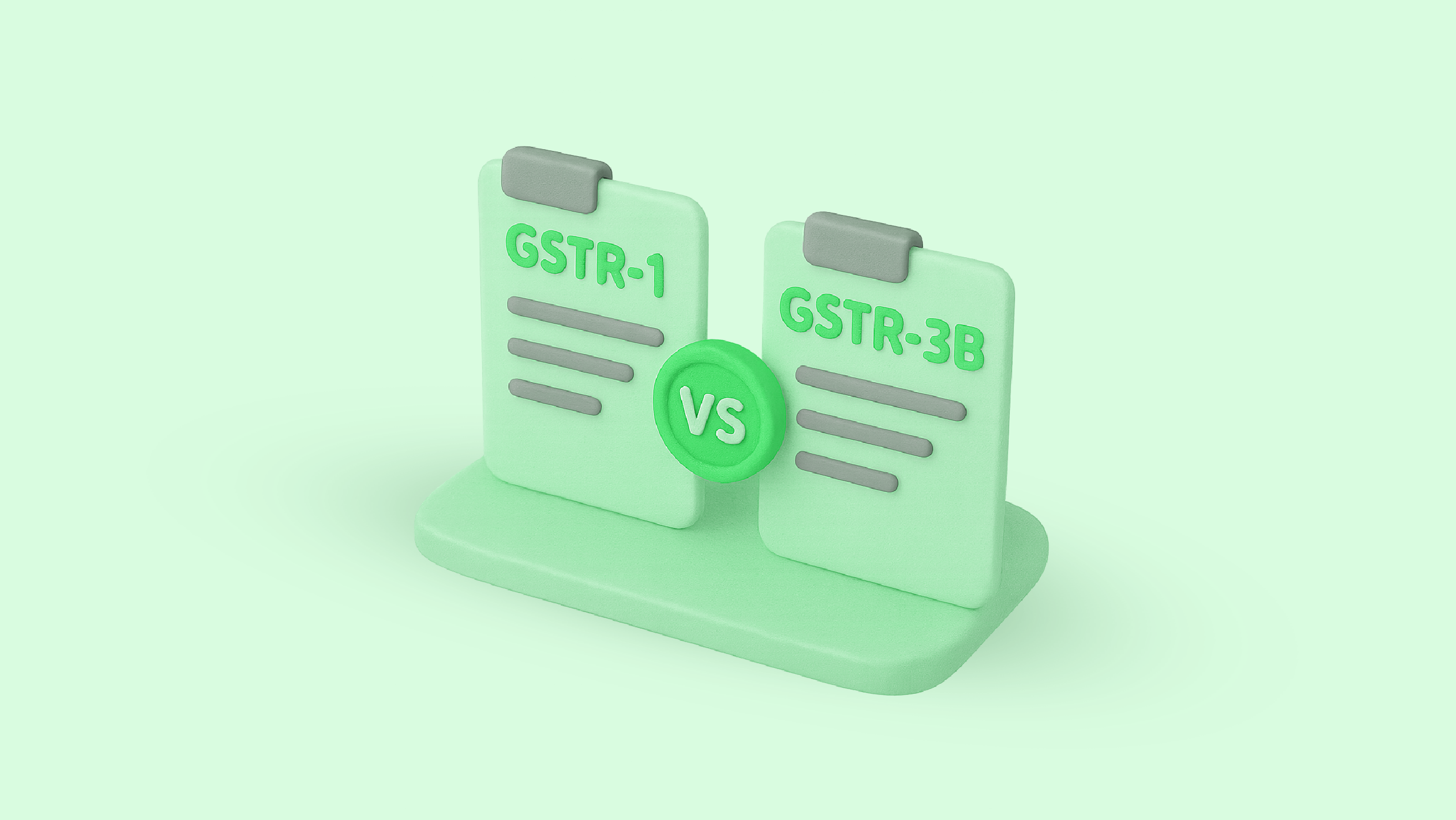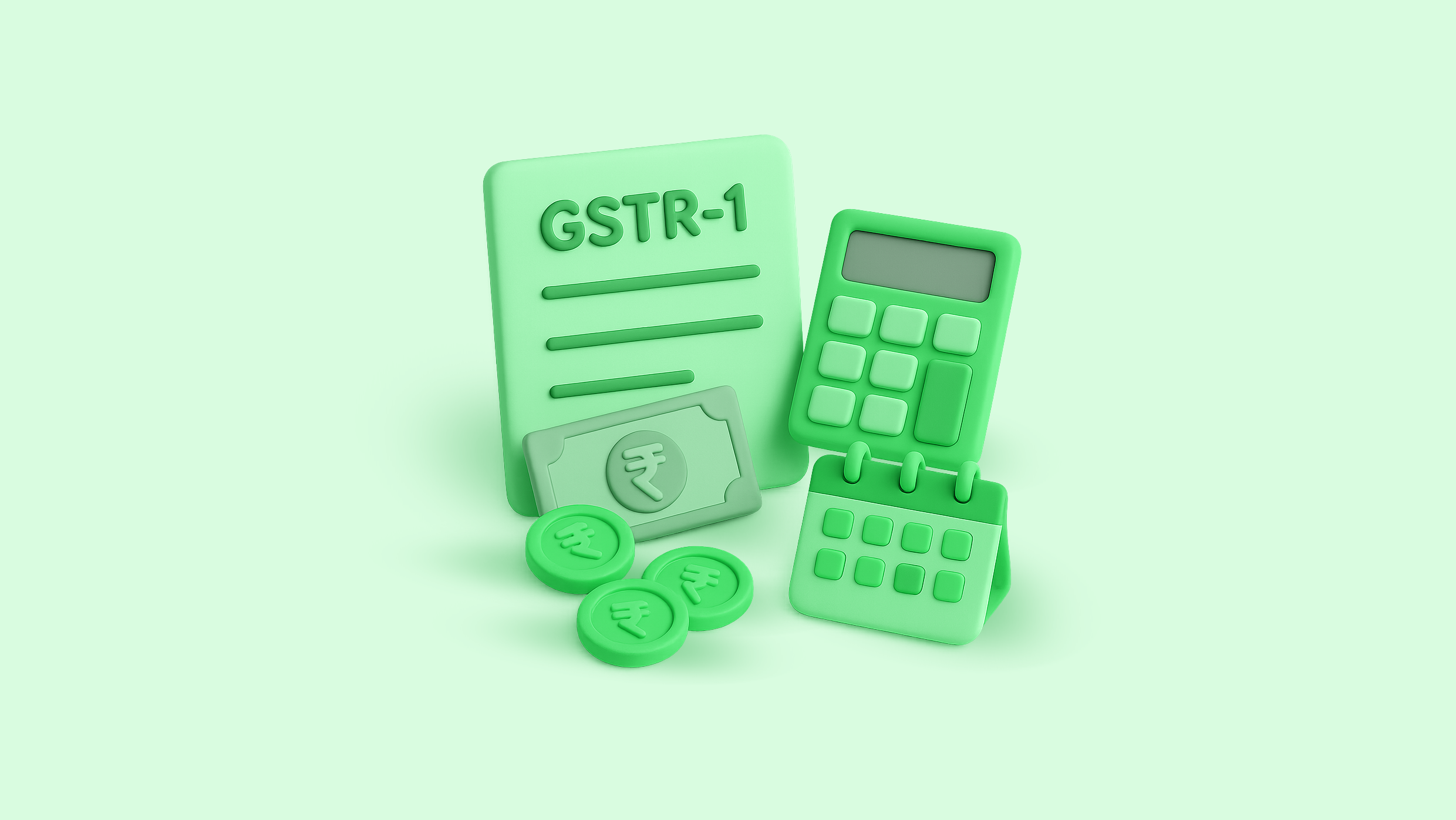When it comes to Goods and Services Tax (GST) compliance, two return forms stand out in importance—GSTR-1 and GSTR-3B. These are monthly (or quarterly) filings that help businesses report their sales and tax liabilities to the government. While both are critical, they serve different purposes. Understanding the difference between GSTR1 vs GSTR3B can help avoid mismatches, penalties, and compliance issues.
This blog breaks down the roles of these two returns, explains how they complement each other, and highlights why accurate filing is essential for any GST-registered business.
What is GSTR-1?
GSTR-1 is a return that captures details of all outward supplies made during a tax period. In other words, it contains invoice-wise information of the sales made by a registered business to its customers—whether they are other registered businesses or unregistered consumers.
Who files it?
All regular GST-registered taxpayers, except composition dealers, non-resident taxpayers, and certain other exempt categories, are required to file GSTR-1.
What does it include?
- Invoice-level details of B2B and B2C supplies.
- Exports.
- Debit and credit notes issued.
- Advances received and adjusted against supplies.
When to file?
- Monthly filers: On or before the 11th of the following month
- Quarterly filers (under the QRMP scheme): On or before the 13th of the month following the quarter
GSTR-1 plays a key role in enabling the recipient to claim Input Tax Credit (ITC). The data you file in GSTR-1 reflects in the recipient’s GSTR-2A and GSTR-2B. So any errors here directly impact the ITC eligibility of your buyers.
What is GSTR-3B?
GSTR-3B is a self-declared summary return. It captures total taxable value, tax liability, ITC claimed, and the final tax payable for the tax period. Unlike GSTR-1, it doesn’t require invoice-wise data—it’s more of a consolidated return.
Who files it?
All regular GST-registered taxpayers must file GSTR-3B. It is mandatory, even if there’s no business activity in a given month.
What does it include?
- Summary of outward taxable supplies.
- Summary of inward supplies liable for reverse charge.
- Eligible Input Tax Credit.
- Tax liability and payment of taxes.
When to file?
- Monthly filers: On or before the 20th of the following month
- Quarterly filers (under QRMP): On or before the 22nd or 24th of the month following the quarter, depending on the state
While certain details in GSTR-3B are auto-populated from GSTR-1 and GSTR-2B, the return is not fully automated. Taxpayers must ensure consistency across all returns, as mismatches—especially in sales or ITC—can lead to scrutiny or notices.
GSTR-1 vs GSTR-3B: How They Work Together
Though GSTR-1 and GSTR-3B are filed separately, they’re interlinked. GSTR-1 reflects the detailed sales information, while GSTR-3B declares the tax based on those sales. So the figures in both returns must align.
For example:
- If a business reports ₹10 lakh in outward taxable supplies in GSTR-1, the same amount should reflect in GSTR-3B under outward supplies.
- Similarly, the Input Tax Credit (ITC) claimed in GSTR-3B should match the eligible ITC available in GSTR-2B, which is generated based on vendors’ GSTR-1 filings.
Discrepancies between GSTR1 vs GSTR3B can trigger GST audits or scrutiny. In some cases, taxpayers may even receive mismatch notices.
Common Mistakes to Avoid
1. Filing inconsistent figures
Many businesses file GSTR-1 with correct invoice-level data but then report different sales figures in GSTR-3B. This mismatch can delay ITC claims and raise red flags.
2. Ignoring amendments
If there are errors in earlier returns, they should be corrected in future filings. Simply adjusting the tax value in GSTR-3B without updating GSTR-1 can lead to compliance gaps.
3. Overclaiming ITC
Sometimes businesses claim ITC in GSTR-3B without verifying whether the corresponding vendor has filed GSTR-1. This results in mismatched credits and potential reversals.
4. Missing deadlines
Late filing of either return attracts penalties and late fees. It also affects a business’s GST compliance rating.
Why Timely and Accurate Filing Matters
Both GSTR-1 and GSTR-3B serve as the backbone of GST compliance. When these returns are filed accurately and on time:
- Recipients can claim their ITC without disruptions.
- Businesses avoid notices, penalties, and late fees.
- Reconciliations during annual return filing (GSTR-9) become easier.
- It builds a reliable compliance track record, which is increasingly relevant in assessments and lending evaluations.
Non-compliance or frequent mismatches can delay refunds, restrict e-way bill generation, and result in increased scrutiny by authorities.
Conclusion
In the debate of GSTR1 vs GSTR3B, it’s not about choosing one over the other—they go hand in hand. GSTR-1 offers transparency through detailed reporting of sales, while GSTR-3B ensures timely tax payment through a simplified summary.
For a GST-registered business, both returns must be filed with equal care. Ensuring that GSTR-1 and GSTR-3B are aligned is not just a best practice—it’s a compliance requirement. By maintaining accuracy in both, businesses can avoid mismatches, support their buyers’ ITC claims, and stay on the right side of the tax system.Tools like OPTOTAX can simplify this process—making it easier to manage, file, and reconcile GST returns with confidence and accuracy.





